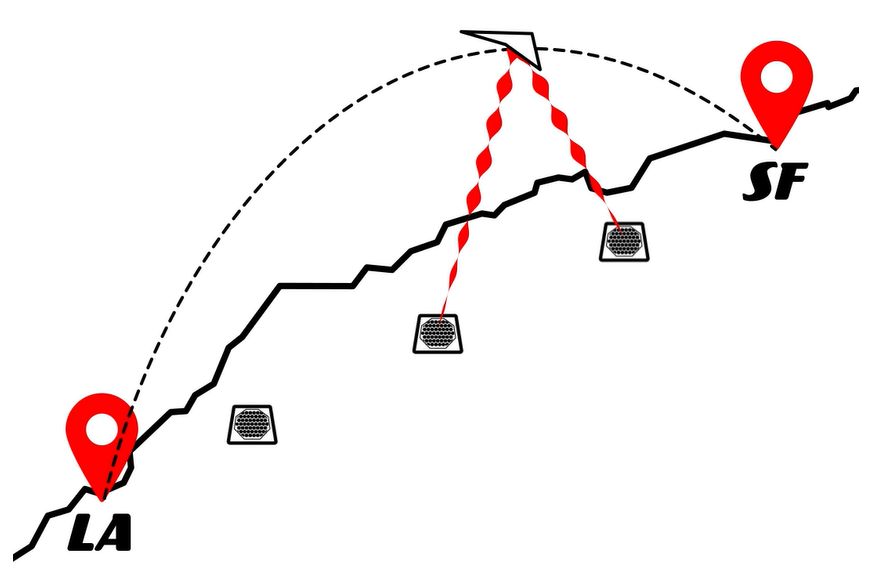Falling firmly under the fascinating science category of ‘What if…?’ comes the idea of powering airplanes with beamed microwaves. Although the idea isn’t crazy by itself, since we can even keep airplanes flying using just solar power (though with no real useful payload), running through the numbers as [Ian McKay] does in a recent article in IEEE Spectrum makes it clear that there are still some major hurdles if we want to make such a technology reality. Yet is beamed microwave power that much more far out than other alternative ways to power aviation?
Most of the issues are rather hard limits with the assumed technology (phased microwave arrays), with the need for 170 meter diameter ground transmitters every 100 km along the route (including floating transmitters on the oceans with massive power cables, apparently). Due to the limited surface area on something like a Boeing 737-800 you’d need to cram the full take-off power needs (~30 MW) on its ~1,000 m2 surface area available for receiver elements, or 150 Watt per rectifying antenna (rectenna) element assuming a wavelength of 5 cm.
The good news is that the passengers inside would probably survive if the microwave-like shielding keeps up, and birds passing through the beams are likely to survive if they’re fast enough. It’d ruin a whole part of the local radio spectrum from leaked microwaves, of course. Unfortunately beaming MW levels of microwaves across 100 km is still beyond our capabilities.
After this fun science session, [Ian] then looks at alternatives like batteries and hydrogen, neither of which come even close to the energy density (or relative safety) of commercial aviation fuels. Perhaps synthetic aviation fuel might be the ticket, but at this point beamed microwave power is as likely to replace aviation fuel as batteries or hydrogen, though more likely than countries like the United States building out a fast & cheap high-speed rail network.
